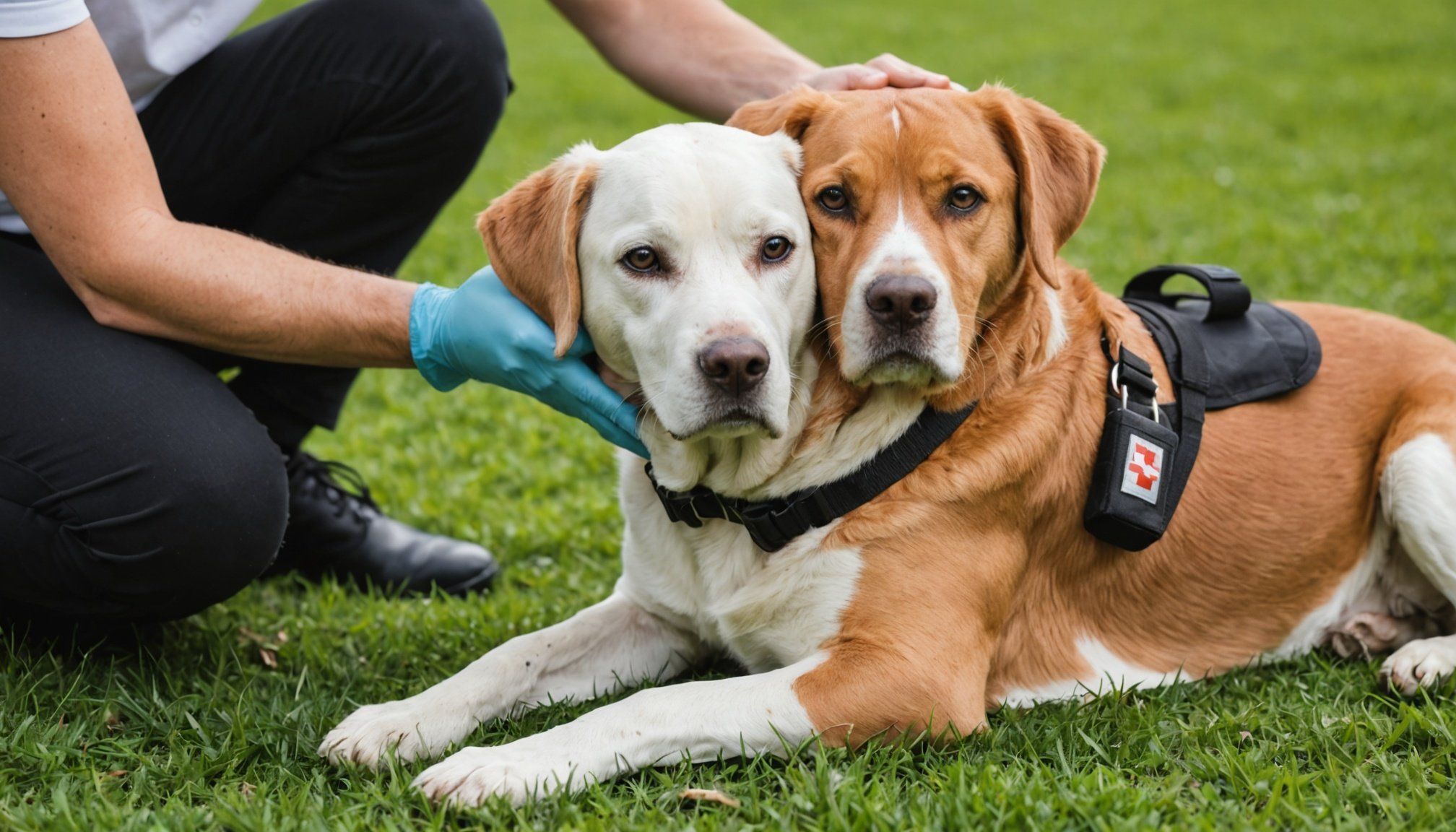Understanding Pet First Aid Basics
Having knowledge of pet first aid is crucial for any pet owner, as it ensures prompt and effective action during emergencies. Understanding the basics of pet first aid involves familiarising yourself with common pet emergencies. For instance, injuries like cuts, wounds, or sprains may occur frequently, while situations such as poisoning or choking are more severe but less common. Recognising these emergencies early is key to addressing them appropriately.
Being well-prepared not only involves awareness but also having the right supplies at your fingertips. A robust pet first aid kit should include essentials like bandages, antiseptic wipes, gauze, and tape, alongside a pair of gloves and a digital thermometer for careful assessment. In more severe cases, having an inflow of knowledge on how to use these supplies can make all the difference.
Staying informed with pet safety tips furthers your readiness. Such preparedness involves regular practice and updating your first aid skills, which are imperative for managing your pet’s well-being. By being prepared, you contribute to a safer environment for your furry friend, readying yourself for any unforeseen events.
Assessment of Pet Emergencies
Being adept at assessing pet emergencies promptly is vital for ensuring your pet’s safety. Observing and recognising symptoms can guide you towards making informed decisions. Signs of distress in pets, such as unusual behaviours, excessive panting, or sudden lethargy, often indicate underlying issues that require immediate attention.
Also to discover : Top Tips to Stop and Tackle Fur Matting in Long-Haired Cats
When confronted with an emergency, you must evaluate the severity of the situation. This involves checking vital signs like pulse and respiration rate, which can offer insights into your pet’s condition. Recognising these cues quickly can aid in determining when to escalate to professional help.
Emergency response requires both urgency and calmness; a swift yet composed approach can significantly affect the outcome. It’s essential to act confidently while keeping your pet as still and calm as possible. This ensures that they don’t experience further distress. Understanding what constitutes an emergency and knowing when to seek professional veterinary help is crucial. For instance, if your pet appears to be in severe pain, has trouble breathing, or if symptoms persist, immediate veterinary intervention might be necessary. This knowledge and preparedness can be critical in safeguarding your pet’s well-being during unexpected situations.
Essential First Aid Techniques for Common Pet Injuries
Understanding first aid techniques is crucial to effectively respond to common pet injuries. By mastering these skills, you can administer necessary emergency care promptly.
Treating Wounds and Cuts
When your pet gets a cut or wound, it’s important to act swiftly. First, clean the area gently with water to remove debris. Then apply antiseptic to disinfect. Cover it with a sterile bandage to prevent infection. Always monitor the wound for signs of swelling or redness, as these may require professional attention.
Handling Poisoning Situations
In potential poisoning instances, identifying the substance is paramount. If your pet appears poisoned, consult a vet immediately. Have details of what and how much was ingested. Avoid inducing vomiting unless instructed by a professional, as it can harm your pet.
Managing Choking Incidents
Pets can frequently choke on small objects. If your pet is coughing or pawing at their mouth, inspect for the object. Gently attempt to remove it if visible. If unsuccessful or if your pet is struggling to breathe, proceed to a vet without delay.
By staying calm and applying these techniques, you can significantly enhance your pet’s safety and well-being. For more detailed guidance on these techniques, consult reputable pet care resources.
Maintaining a Safe Environment for Pets
Creating a secure habitat for your pets begins with identifying hazards in and around your home. Pets are curious creatures, and many household items can pose threats. Secure potentially dangerous substances like cleaning products and pesticides, and be mindful of small objects that could lead to choking incidents.
Safe Travel with Pets
When travelling with your pet, always ensure their safety with appropriate measures. Pet safety, such as using travel crates or seatbelt harnesses, minimises stress and potential injuries during transit. Ensure your pet is comfortable and has access to food and water for long journeys.
Emergency Preparedness Plans
Develop emergency preparedness plans for your pets in the event of natural disasters. This involves having a clear evacuation plan that includes your pets, ensuring their carriers and leashes are accessible, and preparing a pet emergency kit. Your kit should contain food, water, medications, and identification records, offering peace of mind during chaotic situations.
By taking these preventive measures, you secure a safer environment for your furry friends, significantly reducing the likelihood of accidents or emergencies. It’s essential to regularly reassess your home and travel arrangements for potential dangers, adjusting your strategies as your pet’s needs evolve.
Utilizing Resources for Pet Emergencies
When a pet faces an emergency, having pet emergency resources at your disposal is essential. This means having a comprehensive list of veterinary contacts readily accessible. Ensure your list includes both your local vet and any after-hours/emergency clinics. Being prepared in advance can save precious minutes when dealing with a critical situation.
In today’s digital age, veterinary hotlines and apps provide additional layers of support, offering instant guidance and advice. These tools can guide you on immediate steps to take while preparing to transport your pet to professional care. They often have features like symptom checkers and live chats with vets. These services should be verified for reliability and accessibility.
Furthermore, exploring informational guides online can enhance your understanding of pet first aid and care. Reputable websites and pet care organisations offer articles and videos on various emergencies, enabling you to enhance your preparedness. Continuously update your resource list and verify information sources for the most current and accurate advice.
In summary, a robust set of resources coupled with updated contact details ensures you’re well-equipped to handle unforeseen pet emergencies effectively.
Creating Your Pet’s First Aid Plan
Crafting a tailored pet first aid plan equips you for various emergencies. This plan acts as a foundational structure, guiding you in preparedness and response.
Benefits of a Customized First Aid Plan
A customized plan ensures that every action you take is specific to your pet’s needs, enhancing the safety and well-being of your furry friend. Individualized attention considers factors like the pet’s age, breed, and health conditions, which can influence the type of emergencies they might encounter.
Involving Family Members
Incorporating family members in your emergency procedures fosters a collaborative and informed approach. Everyone should be familiar with basic first aid techniques and know where to find supplies. Include instructions in your plan for quick reference during a crisis, ensuring even the youngest family members are comfortable with simple tasks.
Routine Checks and Updates
Regularly reviewing and updating your first aid plan is crucial. Conduct routine checks on supplies in your pet first aid kit, replenishing any depleted items immediately. Keep your knowledge fresh by engaging in periodic first aid training sessions. This ongoing maintenance guarantees that you’re always prepared to handle unforeseen situations, giving both you and your pet peace of mind.







